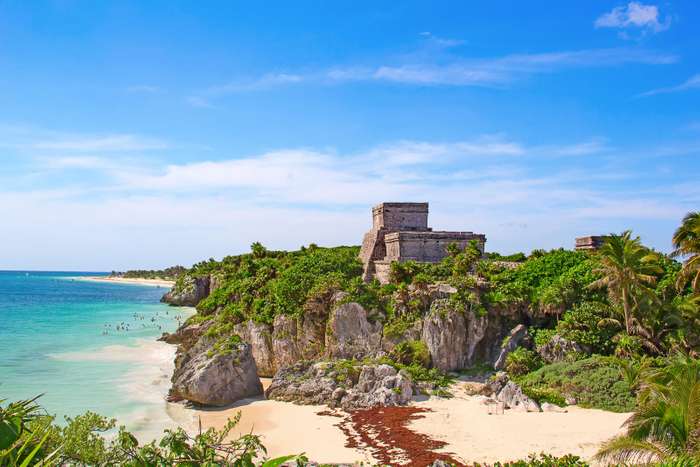Quintana Roo, where the Riviera Maya is located, became a Mexican state in 1957, and from them until the end of the North American Free Trade Agreement, the state focused its resources on building a tourism empire through tariff-free shopping. When the agreement ended in 1994, many flocked to the area lying between Playa del Carmen and Tulum to play on the beaches, shop in stores and see Mayan ruins. When the agreement ended, the foundation had already been laid to make the Riviera Maya a tourism hotbed that approximately 300,000 visitors annually. The number of people visiting the Riviera Maya continues to climb annually, and one of the main reasons is the many beautiful natural attractions in this area called the Mexican Caribbean. There are many natural areas that you will want to visit in Riviera Maya.
Sian Ka’an Biosphere
It only took one year for Sian Ka’an Biosphere to be recognized by UNESCO as a World Heritage Site after its establishment in 1986. Anglers will especially want to visit here because of the still saltwater lagoons that are brimming with fish. Fly fishing is particularly popular here. Tarpons arrive in April and are easily caught until mid-June. If you come from May 1 until about the end of June, expect to catch your limit of bonefish. Barracuda can put up quite a fight before being landed during the winter months when they come to the shallower water. The biosphere is also a great place to watch tropical birds, especially on a sunset cruise. The beach here is beautiful and is often less crowded than in other Riviera Maya locations.
Cenote Chaak Tun
Cenote Chaak Tun is only available on a guided tour, do not forget to bring your waterproof camera because the two main underground caverns are incredibly photogenic. After donning your wetsuit and storing everything in your locker, you will be treated to seeing many beautiful underwater cave formations. One of the draws of visiting Cenote Chaak Tun is diving in the first pool to see the replica of the Virgin of Guadalupe located near its bottom. Pay attention to the Mayan altar as you head to the second underwater pool. Spend some time exploring the jungle after your dives or stay for one of the tequila-tasting parties.
Puerto Morelos Reef
Just a short boat ride away from Puerto Morelos lies the world’s second-largest barrier reef. Since 1998, this part of the Great Mesoamerican Reef has been a national park where you can go scuba diving. You will have a chance to explore two unique areas of the reef. The one under the white breaking line holds lots of seagrasses that are surrounded by sea turtles. When you move to the second area, you will see much more corral. This corral area is home to large schools of grunts, butterflyfish, and parrotfish.
Xcaret Underground Rivers
While the three underground rivers were purchased in the 1980s by a developer, who has built a well-maintained amusement park, the real draw for nature lovers visiting Xcaret is the three underground rivers. You will ride in a boat down these underground rivers that are about 0.3 miles long past beautiful rock formation and pass through cenotes.
Coba
Combine nature with Myan history on a visit to Coba. You can climb the 130 steps on the 137-foot tall Coba Pyramid. Hike to see the Macanxoc Group, which is a series of altars built to worship the Mayan gods. See the sacbe commerce roads constructed by hand. These limestone roads were traveled mainly at night, counting on the moonlight bouncing off their limestone surface to illuminate them. For nature lovers, however, the main reason to visit Coba is to go birdwatching. Over 250 species of birds have been spotted in this area. You will also want to see the four lakes, which may have played an important role in Mayan worship located here.
There are many natural attractions to see in Riviera Maya, so you will want to book your Riviera Maya luxury vacation rentals early. This area stays in the mid-80s year-round, but you may want to consider avoiding the wet season from July to September when over five inches of rain falls on average monthly. That still leaves plenty of time to visit the Riviera Maya’s natural attractions.

